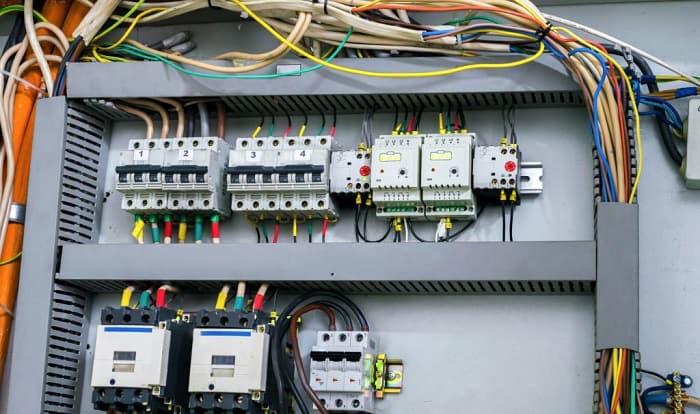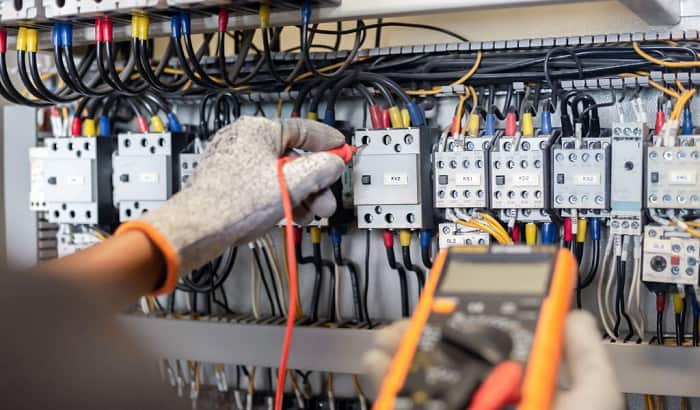A 40 amp circuit breaker is necessary for a circuit for your high-powered appliances. However, it is not enough that you know what size wire for a 40 amp breaker is appropriate to have a functional or efficient electrical circuit.
Other factors such as continuous amp ratings, length of wire, and type of wire based on NEC requirements should also be considered. It will keep you safe and help you pass the city electrical inspection.
I highly suggest reading this article to know the best wire for your 40 amp circuit and other factors to consider.
Table of Contents
What is the Recommended Size Wire for 40 Amp Breaker?
40 amp, 50 amp, and 60 amp circuit breakers are mainly used for high-powered appliances. They are used for gas stoves, air conditioners, furnaces, etc. In these cases, having the proper wire size for each circuit breaker is necessary to prevent future electrical problems and ensure your devices’ safety.
- If you look at a 40 amp wire size chart, you can see that the recommended wire size is a minimum of 8 gauge.
However, some professional electricians prefer to use a 6 gauge wire, and there is nothing wrong with it. Using a larger wire size is suitable for future circuit expansion and adding some high-powered devices.
The wire size determines the electrical resistance and the sustainable amount of current. Using a smaller wire (than stated above) in a 40 amp service may affect the current flow and cause high resistance and heat build-up. This problem is hazardous since it can melt the insulator and cause a short circuit in the line.
In contrast, using a larger wire is safer and ideal for many residential houses. It will result in less resistance in current flow as well as less heat build-up – meaning, you can install a 220v 40 amp wire size of 6 gauge safely and without violating any NEC rules.
Aside from the wire size, there are also many things to consider when installing a new circuit. Here is a basic overview of them.
1. 80% NEC Rule
According to the NEC, 80% of the circuit breaker’s total capacity is allowable for continued usage (3 hours or longer). Anything more than this rule may result in the constant tripping of a circuit breaker due to circuit overloads.
This means that if you are using an 8 wire gauge for 40 amp, you are only allowed to use a 32 amps maximum of continuous loads.
It is only applicable to use more than 80% up to the maximum capacity of the breaker if the usage is application start-up and does not exceed the breaker’s maximum capacity.
The same method is applied to an even lower amp like 30 amp, or even 15 amp circuit breakers. Considering upgrading your circuit breaker and wire is necessary if you need a higher amount of electricity in your circuit.
2. Length of the Wire
There is no problem using the minimum recommended 40 amp breaker wire size if the circuit line is below 100 feet.
But if the distance is 100 feet or more, it is worth considering using a 6 gauge size wire for a 40 amp breaker. It is to reduce the resistance that is caused by the longer travel of current and obstacles such as the curving or bending of wires.
Additionally, using the smallest 40 amp wire gauge of 8 AWG here may result in an insufficient voltage supply. There is a strong possibility of a voltage drop in a circuit line more than 100 feet in length. As a result, your appliances and lighting may become less efficient or malfunction.
To solve the voltage drop problem, you can make the sub panel closer to the appliance or upgrade the panel based on your needed amps.
3. Wire Type
When installing a 240v 40 amp wire size of 8 gauge, another thing to look at is the material of the wire you need to use.
Copper and aluminum are the two primary conductors used in today’s electrical cables. Aluminum wires are much more inexpensive than copper wires since they have only 30% of copper’s weight.
However, compared to aluminum, copper is still a better conductor of electricity. It can carry more current flow than aluminum in the same diameter. Furthermore, it is sturdier and can carry more heat resistance.
Using aluminum may not be efficient for more extensive applications. In this case, you may need a larger 40a wire size than you would if you picked copper instead.
For example, an 8 gauge copper wire size for 40 amp 240 volt circuit may be the equivalent of a 6-gauge aluminum one.
This video by Starving Electrician will not only help you identify what size of wire is recommended for different circuits. It can also help you figure out what circuit breaker is best to use for the different circuits and appliances in your house.
Conclusion
We hope the information above helped you prepare for your electrical setups.
Is there anything you want to know other than what size wire for a 40 amp breaker to use? You can leave it in the comment box below, and I will try to answer it for my next article.

I am Andrew Wright. With 8 years of experience designing, installing, and maintaining electrical power systems. I love my job, and I have always wanted to offer others the necessary help so they can take care of their houses.


